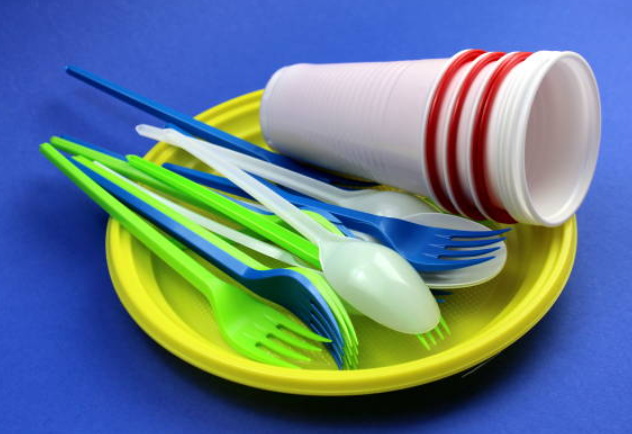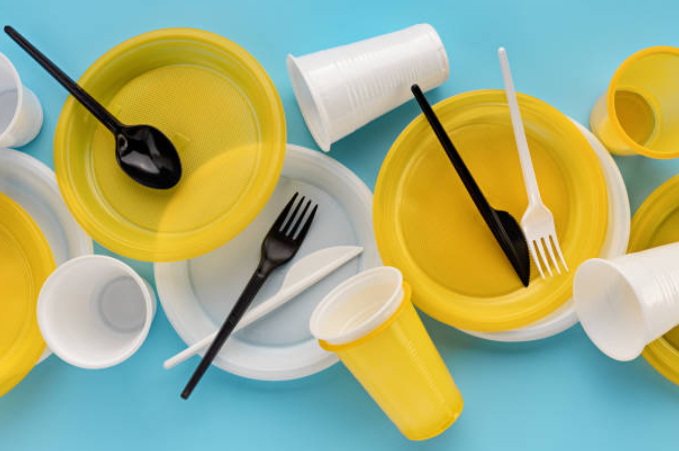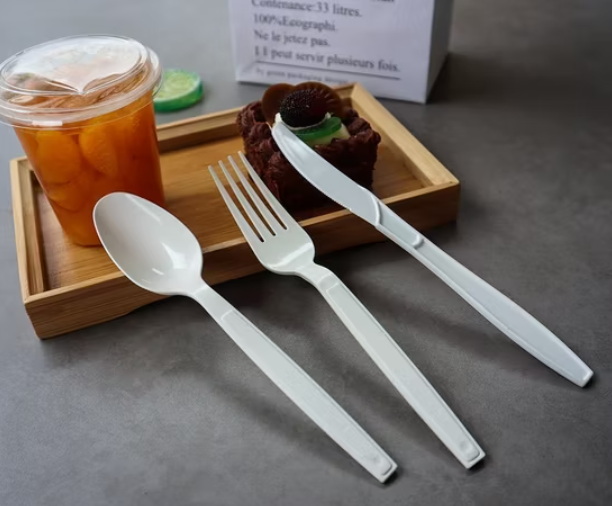
Content Menu
● Introduction to Plastic Disposable Cutlery
>> Production Process
● Benefits of Plastic Disposable Cutlery
>> Convenience and Time-Saving
>> Cost-Effectiveness
>> Hygiene and Safety
● Environmental Considerations
>> Biodegradable Alternatives
● Alternatives to Plastic Disposable Cutlery
>> Wooden Cutlery
>> Compostable Bioplastics
● Future Trends in Disposable Cutlery
>> Innovations in Biodegradable Materials
>> Impact of Regulations
● Market Dynamics and Consumer Behavior
>> Consumer Awareness and Education
>> Business Strategies
● Conclusion
● FAQ
>> 1. What are the main benefits of using plastic disposable cutlery?
>> 2. What are some environmental concerns associated with plastic disposable cutlery?
>> 3. What alternatives are available to plastic disposable cutlery?
>> 4. How can the environmental impact of plastic disposable cutlery be reduced?
>> 5. Are there any regulations banning the use of plastic disposable cutlery?
● Citations:
In the realm of disposable tableware, plastic disposable cutlery has been a staple for many years, offering convenience, cost-effectiveness, and versatility. Despite growing environmental concerns, plastic disposable cutlery remains a popular choice for various settings, including fast-food chains, outdoor events, and everyday household use. This article will delve into the reasons why plastic disposable cutlery is often preferred over other materials, exploring its benefits, environmental considerations, and future trends.

Introduction to Plastic Disposable Cutlery
Plastic disposable cutlery includes forks, knives, and spoons made from lightweight, durable plastics such as polystyrene (PS) and polypropylene (PP). These materials are chosen for their affordability, ease of production, and ability to handle both hot and cold foods without compromising their structure.
Production Process
The production of plastic disposable cutlery involves a process called injection molding. Here's a simplified overview:
1. Material Selection: Plastic pellets, typically made from polystyrene or polypropylene, are selected based on their durability and cost-effectiveness.
2. Injection Molding: These pellets are melted and injected into molds shaped like forks, knives, and spoons.
3. Cooling and Extraction: The molten plastic cools and solidifies within the mold, after which the cutlery is extracted and prepared for packaging.
Benefits of Plastic Disposable Cutlery
Convenience and Time-Saving
One of the primary advantages of plastic disposable cutlery is its convenience. It eliminates the need for washing and storing, making it ideal for large events or fast-paced environments where time is of the essence. This convenience is particularly appreciated in settings where labor costs are high or where the focus is on quick service.
Cost-Effectiveness
Plastic disposable cutlery is generally cheaper than reusable alternatives, making it a cost-effective option for businesses and individuals alike. This affordability is particularly beneficial for high-volume operations like fast-food chains, where the cost of purchasing and maintaining reusable cutlery could be prohibitively expensive.
Hygiene and Safety
Since plastic disposable cutlery is used once and then discarded, it reduces the risk of cross-contamination and food-borne illnesses, making it a safer choice in environments where hygiene is paramount. This is especially important in healthcare settings or during outdoor events where access to washing facilities may be limited.
Environmental Considerations
Despite its benefits, plastic disposable cutlery faces criticism due to its environmental impact. Traditional plastics are non-biodegradable and contribute to pollution. However, advancements in biodegradable plastics and recycling technologies are helping mitigate these concerns.
Biodegradable Alternatives
Materials like polylactic acid (PLA) offer a more eco-friendly alternative. PLA is biodegradable and derived from renewable resources such as corn starch or sugarcane. While PLA cutlery is more expensive than traditional plastic, it provides a sustainable option for those willing to invest in reducing their environmental footprint.
Alternatives to Plastic Disposable Cutlery
As environmental regulations tighten, alternatives like wooden and compostable cutlery are gaining popularity. These options offer a more sustainable choice but may come at a higher cost and have limitations in terms of durability and heat resistance.
Wooden Cutlery
Made from sustainable wood sources, wooden cutlery is biodegradable and offers a natural aesthetic. However, it may not be as durable as plastic and can be more expensive. Wooden cutlery is often used in upscale events or by environmentally conscious consumers who are willing to pay a premium for sustainability.
Compostable Bioplastics
Compostable bioplastics, such as PLA, are made from renewable resources and can decompose under controlled conditions, reducing environmental impact. These materials are becoming increasingly popular in regions with strict waste management policies.

Future Trends in Disposable Cutlery
The future of plastic disposable cutlery is likely to involve a shift towards more sustainable materials. Governments and consumers are driving demand for eco-friendly alternatives, which is expected to lead to innovations in biodegradable plastics and compostable materials.
Innovations in Biodegradable Materials
Researchers are continually developing new biodegradable materials that are not only environmentally friendly but also durable and cost-effective. These innovations could significantly reduce the environmental impact of disposable cutlery while maintaining its convenience and affordability.
Impact of Regulations
Regulatory changes are also influencing the market for disposable cutlery. Some regions have banned single-use plastics, including cutlery, to reduce waste and promote sustainability. These bans are pushing manufacturers to develop alternatives that meet both consumer needs and environmental standards.
Market Dynamics and Consumer Behavior
Consumer behavior plays a crucial role in shaping the market for disposable cutlery. As awareness about environmental issues grows, consumers are increasingly seeking sustainable options. This shift in consumer preference is driving businesses to adopt more eco-friendly practices and products.
Consumer Awareness and Education
Educating consumers about the benefits and drawbacks of different types of disposable cutlery can influence their purchasing decisions. Campaigns highlighting the environmental impact of traditional plastics and the advantages of biodegradable alternatives are becoming more prevalent.
Business Strategies
Companies are responding to consumer demand by investing in sustainable products. This includes developing biodegradable cutlery lines and promoting environmentally friendly packaging. Such strategies not only reduce environmental impact but also enhance brand reputation and appeal to environmentally conscious consumers.
Conclusion
In conclusion, while plastic disposable cutlery offers convenience and cost-effectiveness, its environmental impact cannot be ignored. As technology advances, biodegradable alternatives are becoming more viable, offering a balance between practicality and sustainability. Ultimately, the choice between plastic disposable cutlery and other materials depends on specific needs and environmental considerations.

FAQ
1. What are the main benefits of using plastic disposable cutlery?
- Convenience: Eliminates the need for washing and storing.
- Cost-Effectiveness: Generally cheaper than reusable alternatives.
- Hygiene: Reduces the risk of cross-contamination.
2. What are some environmental concerns associated with plastic disposable cutlery?
- Non-Biodegradable: Contributes to pollution and waste accumulation.
- Resource Consumption: Requires petroleum-based materials for production.
3. What alternatives are available to plastic disposable cutlery?
- Wooden Cutlery: Biodegradable but less durable and more expensive.
- Compostable Bioplastics: Made from renewable resources and can decompose under controlled conditions.
4. How can the environmental impact of plastic disposable cutlery be reduced?
- Recycling: Improving recycling practices for plastic waste.
- Biodegradable Options: Transitioning to biodegradable materials like PLA.
5. Are there any regulations banning the use of plastic disposable cutlery?
- Regional Bans: Some regions have banned single-use plastics, including cutlery, to reduce waste and promote sustainability.
Citations:
[1] https://onlyonestopshop.com/blogs/news/the-surprising-benefits-of-disposable-plastic-tableware-convenience-meets-sustainability
[2] https://www.richmondadvantage.com/shop-by-category/restaurant-supplies/disposable-plastic-cutlery/disposable-cutlery-buying-guide.html
[3] https://www.efavormart.com/pages/why-use-plastic-cutlery-utensils
[4] https://www.istockphoto.com/photos/plastic-cutlery
[5] https://www.youtube.com/watch?v=oxN70ktR0jg
[6] https://www.vic.gov.au/sites/default/files/2022-11/Victorian-Plastics-Ban-Guide-for-Business-FAQs.pdf
[7] https://gmgreencity.com/single-use-plastics-questions-and-answers/
[8] https://www.amicopackagingltd.com/advantages-of-using-disposable-cutlery
[9] https://www.supplysmiths.com/blogs/news/4-fantastic-advantages-of-using-disposable-cutlery
[10] https://droppe.com/blog/article/how-to-choose-the-right-disposable-cutlery-for-food-service-a-buyers-guide/
[11] https://droppe.com/blog/article/understanding-materials-plastic-wooden-and-compostable-disposable-cutlery/
[12] https://www.magnumpackaging.co.uk/disposable-cutlery-faq-i27
[13] https://www.epd.gov.hk/epd/sites/default/files/epd/english/environmentinhk/waste/pub_consult/files/tableware-con-doc-en.pdf
[14] https://hongkongfp.com/2024/05/23/almost-70-of-small-medium-eateries-still-using-disposable-utensils-despite-single-use-plastic-ban-govt-says/
[15] https://customcupfactory.com/blogs/news/why-restaurants-choose-disposable-utensils-benefits-you-should-know
[16] https://packagingfg.com/2023/10/06/disposable-food-cutlery-benefits/
[17] https://www.allianceonline.ie/blog/2023/03/why-biodegradable-disposable-cutlery-is-a-better-choice/
[18] https://www.epd.gov.hk/epd/sites/default/files/epd/english/environmentinhk/waste/pub_consult/files/tableware-leaflet-en.pdf
[19] https://www.shutterstock.com/search/plastic-cutlery
[20] https://www.easyngreen.com/eight-common-questions-about-ecofriendly-disposable-utensils.html
[21] http://www.wna.biz/UserFiles/File/Metallized_Disposable_Cutlery_FAQ.pdf
[22] https://www.anchenggy.com/blog/must-ask-questions-for-your-disposable-tableware-supplier.html
[23] https://www.anchenggy.com/blog/disposable-cutlery-food-safety-impact.html
[24] https://www.ecobifrost.com/advantages-of-using-biodegradable-disposable-cutlery/
[25] https://polygonpapertech.com/disposable-cutlery-reinvented/
[26] https://www.istockphoto.com/photos/disposable-cutlery
[27] https://www.youtube.com/watch?v=GYwEdrPxPy4
[28] https://www.webstaurantstore.com/54139/plastic-cutlery-utensils.html
[29] https://www.freepik.com/free-photos-vectors/plastic-cutlery
[30] https://www.youtube.com/watch?v=VRLSUiBOlV0
[31] https://greentableware.hk/en-us/home/about

















